
If you are reading this article, you are probably interested in visiting Osaka. Or you are keen to deepen your knowledge about the city. You may have visited Japan in the past and learned a few things about the country – popular places to visit, delicious food that people should try, and some characteristics of Japanese. As a proverb says, so many countries, so many customs. Each country has a unique set of customs and cultures that make them different and exclusive.
Japan is not an exception. It is a well-known fact that there are a lot of cultural and food differences among regions. Japanese TV shows often compare the differences between Kanto, the region around Tokyo, and Kansai areas, around Osaka. Some of the common practices in Tokyo do not make sense in Osaka. These two cities are only two and a half hours away by a bullet train, yet many things can be different. Many tourists would usually not see them, but you would enjoy the stay in Japan more if you knew them. Here is a little trivia . You are an Osaka local if you know them.
Table of Contents
Right or Left?
There are so many unsaid rules in Japan. Those are the things you should follow if you are Japanese or live in Japan. Where to stand on the escalator is one of them, and it varies depending on which region you are in. In Tokyo, they stand on the left and leave the right side open for people in rush. Whereas in Osaka, we stand on the right and leave the left open. Japan is such a tiny country, and why is there such a difference between two rather close cities?
There are various theories for it. One of them is from a Samurai custom. They say most Japanese were right-handed. Right-handed Samurai used to carry their swords on their left so that their sheaths do not bump into each other’s when they pass by. Therefore, it has become a customary rule to stand on the left of the escalator and leave the right open.
Then, why do Osaka locals stand on the opposite side from Tokyo? The answer is in the Osaka Expo held in 1970. As the Osaka local government expected a number of foreign travellers coming to the city, a more global way, standing on the right on the escalator, was introduced. The Expo announced a new side to stand on in order to meet the world’s standard. Since then, standing on the right and leaving the left open have become the rule in most of the Kansai areas, except for Kyoto.
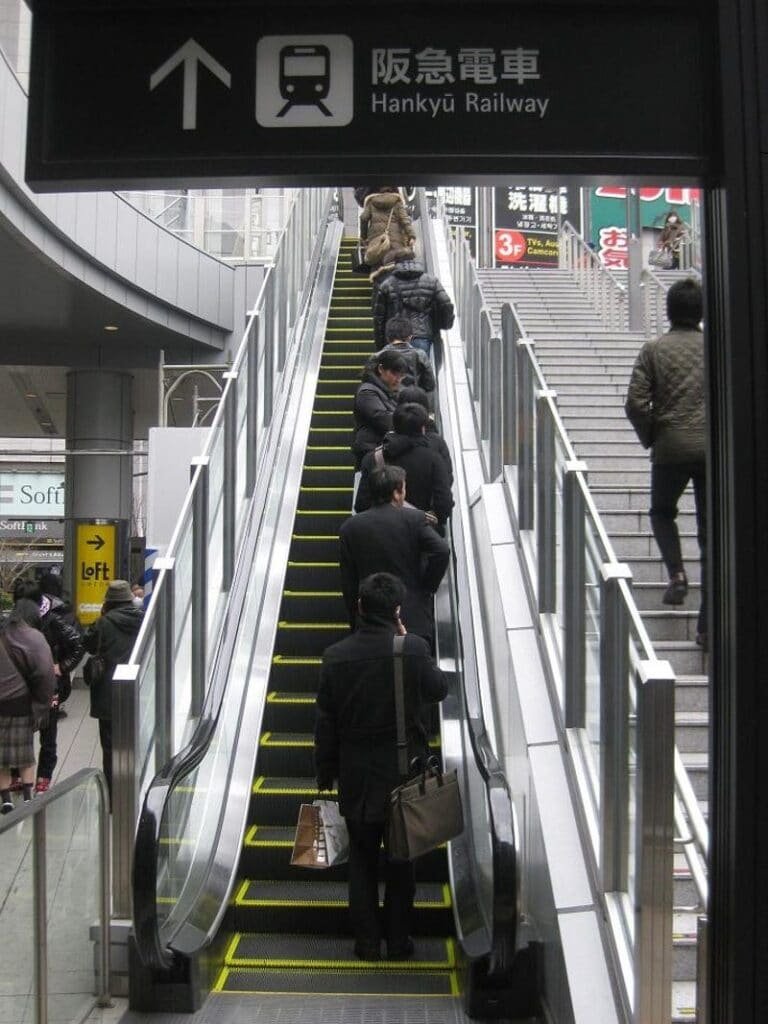
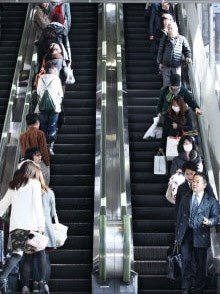
Soba or Udon Noodles?
Soba, buckwheat noodles, and Udon, flour noodles, are the two major noodle types eaten in Japan. It is said that more people in the Kanto area prefer soba noodles over udon noodles, and more Kansai locals prefer udon over soba. There are significant distinctions in the names of noodle dishes in Tokyo and Osaka.
One of the popular noodle dishes with a thin piece of fried tofu in a soy-based hot broth is called kitsune udon in Osaka or kitsune soba in Tokyo. The name kitsune, literally translates as fox, originates from a theory that fried tofu was believed to be foxes’ favorite food. Another popular noodle dish is tanuki, named after the Japanese word for a racoon dog, soba or udon noodles with deep-fried tempura droplets on top. So if you are a soba lover and would like a piece of sweetened fried tofu with your noodles, you order kitsune soba in Tokyo.
If you’re interested how to make Kitsune Udon, read our detailed recipe HERE.
Kitsune and tanuki have different meanings in Tokyo and Osaka. If you order a kitsune in Osaka expecting that it would come with soba noodles, you will be disappointed when the dish comes to you.
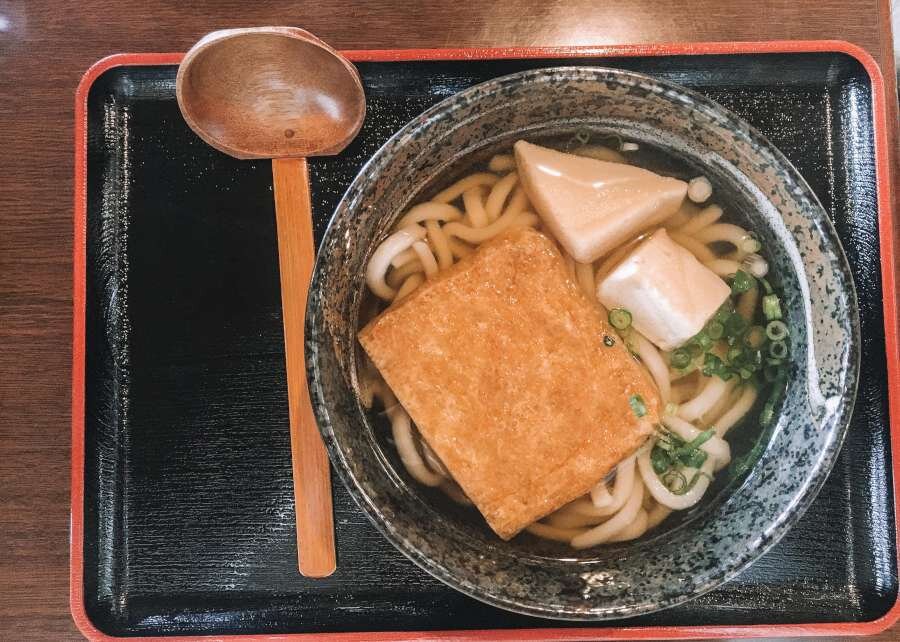
In Osaka, a kitsune, in terms of the name of noodles, only indicates udon noodles with fried tofu on top. If you want soba noodles with fried tofu, then you order a tanuki. Do you still follow me?
There are some theories about the reasons why tanuki specifically indicates soba with tempura droplets in Osaka. One of them is based on the fact that udon is more preferred over soba in the Kansai area, and also from folktales in which a tanuki, an animal, had a special power and would often bewitch people by transforming into something different. So it is because people’s favorite udon was “transformed” into soba, that is why it is called tanuki soba.
Then, the question is, what should you do if you would like to have soba with tempura droplets in Osaka? The answer is you order haikara.
Everyone’s favorite – Egg Sandwiches
“Bourdain was right. This simple Lawson egg sandwich is a next level gastronomic experience!” A tweet by a New York Times reporter, Tariq Panja, on an egg sandwich that has received over 8,000 likes and 3,000 retweets. This sandwich with egg salad that is tucked between slices of white bread can be purchased in any convenience store in Japan. Egg sandwich in Osaka however, has a different style.
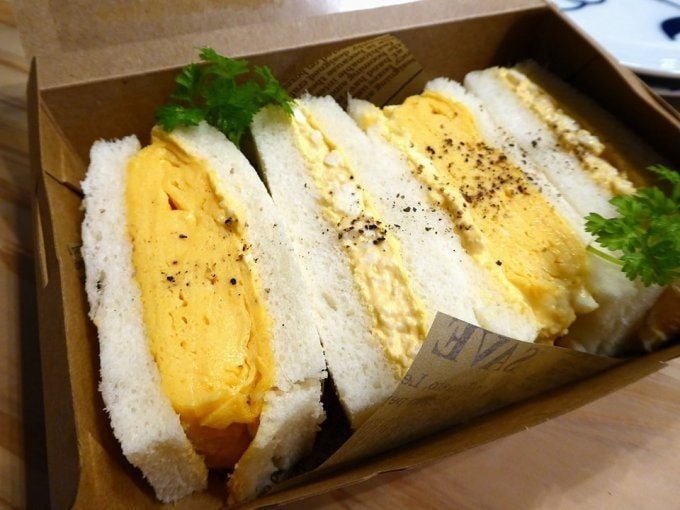
Instead of egg salad, the Osaka style egg sandwich has a thick omelet between white bread. The history of this style goes back about 200 years. Centering Kobe as a port city where foreigners stayed, the neighboring cities including Osaka developed the cafe culture for those foreigners. One of the dishes provided was the egg sandwich with an omelet. Still today, there are many cafes and restaurants in Osaka that serve this style of sandwich, and this style comes to majority of Osaka locals’ minds when they think of egg sandwiches.
True meaning of signals

This is a photo of one of the busiest crosswalks in JR Osaka station. Could you tell what is wrong with this picture? The answer is that people start crossing before the pedestrian crosswalk signal turns green. This is a typical behavior of Osaka locals that you see everyday.
Osaka locals are known for their impatience. Research shows that the walking speed of Osaka locals is among the world’s fastest. According to the International Association of Traffic and Safety Sciences, the average walking speed of Osaka locals is 1.60m/sec, compared to that of Parisians’ 1.46m/sec. It is frequently heard that it is a cultural shock for those from other prefectures or countries to find out how fast Osaka locals walk. Such impatient Osaka locals cannot wait for the signal to turn green. In Osaka, the red signal means “cross with caution,” and yellow means “go.”

This is the first countdown pedestrian traffic signal introduced in Japan. Where was it first installed? Yes, that is right, Osaka! Knowing Osaka locals so well that this signal stops counting down after 10 seconds to prevent people from starting to cross a few seconds before the signal turns green.
There is a famous proverb, “When you are in Rome, do as the Romans do.” It is against the law to cross while the signal is red. When you visit Osaka, please be patient and do NOT do as the Osakans do when it comes to crossing a crosswalk.
Electric voltage, 50Hz or 60Hz?
Japan is a rare country when it comes to having two different electric voltages of 50Hz and 60Hz. It is 50 Hz in most of the east side of Japan, and 60Hz in the west side. In most countries in the world, it is either 50Hz or 60Hz. Then, why are two different electric voltages used in Japan?
Electricity started to be used in Japan in the Meiji era, about 150 years ago. At that time, generators had to be imported from overseas. German generators were imported to Tokyo, and American to Osaka. However, the ones that were brought to Tokyo generated electricity whose frequency was 50Hz while the generators imported to Osaka created 60Hz.
This system still remains today. So when you travel to Japan and plan to visit both Tokyo and Osaka, make sure you bring a converter for your electronics.
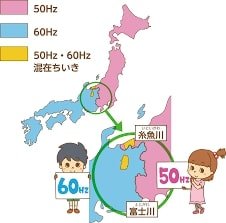
Toilet paper – 1Ply? or 2ply?
Do you use single-ply toilet paper or 2-ply toilet paper? If you use single-ply, then you are more like an Osaka local.
For some reasons, the number of single-ply users in the Kansai area is slightly higher than that of 2-ply users. Let’s take a look at the whole country of Japan. According to Oji Nepia Co., Ltd., one of the largest toilet paper manufacturers in Japan, the number of sales in 2019 for 2-ply is 66% and outnumbered that of single-ply, whose sales occupy 32%. However, looking at the regional data, the result painted a different picture. In the Kansai area, single-ply outsold 2-ply 53% to 46%.
Not only Oji Nepia, but there were also many other toilet paper manufacturers that have had the same result over the years. One of the possible reasons behind this may be because of the characteristics of Osaka locals.
One of the established stereotypes of Osaka locals is being thrifty. It has been said that it is because the city has been known as the city of merchants since the Edo period. Single-ply toilet paper is considered to be more economical than 2-ply. The length of a 2-ply toilet paper roll is half of that of a single-ply roll. However, the length per usage is actually more than half so that a 2-ply roll is used up quicker than a single-ply roll.
A professor who has been studying the Osaka culture points out that Osaka locals immediately do the math to find out which has a better value once they see products that have the same price. They tend to seek economic rationality over the comfortability of use.
These are some of the differences between Tokyo and Osaka. Some have historical backgrounds, and others were created because of the characteristics of the people who lived in the region. We, as travelers, sometimes assume that all in one country has the same culture, characteristics, and customs. It is even more so when we do not have knowledge about the country. The deeper understanding, we have, the more memorable and enjoyable the trip would be. Get yourself familiarized with the Osaka trivia and make your next trip to Osaka more interesting.





















